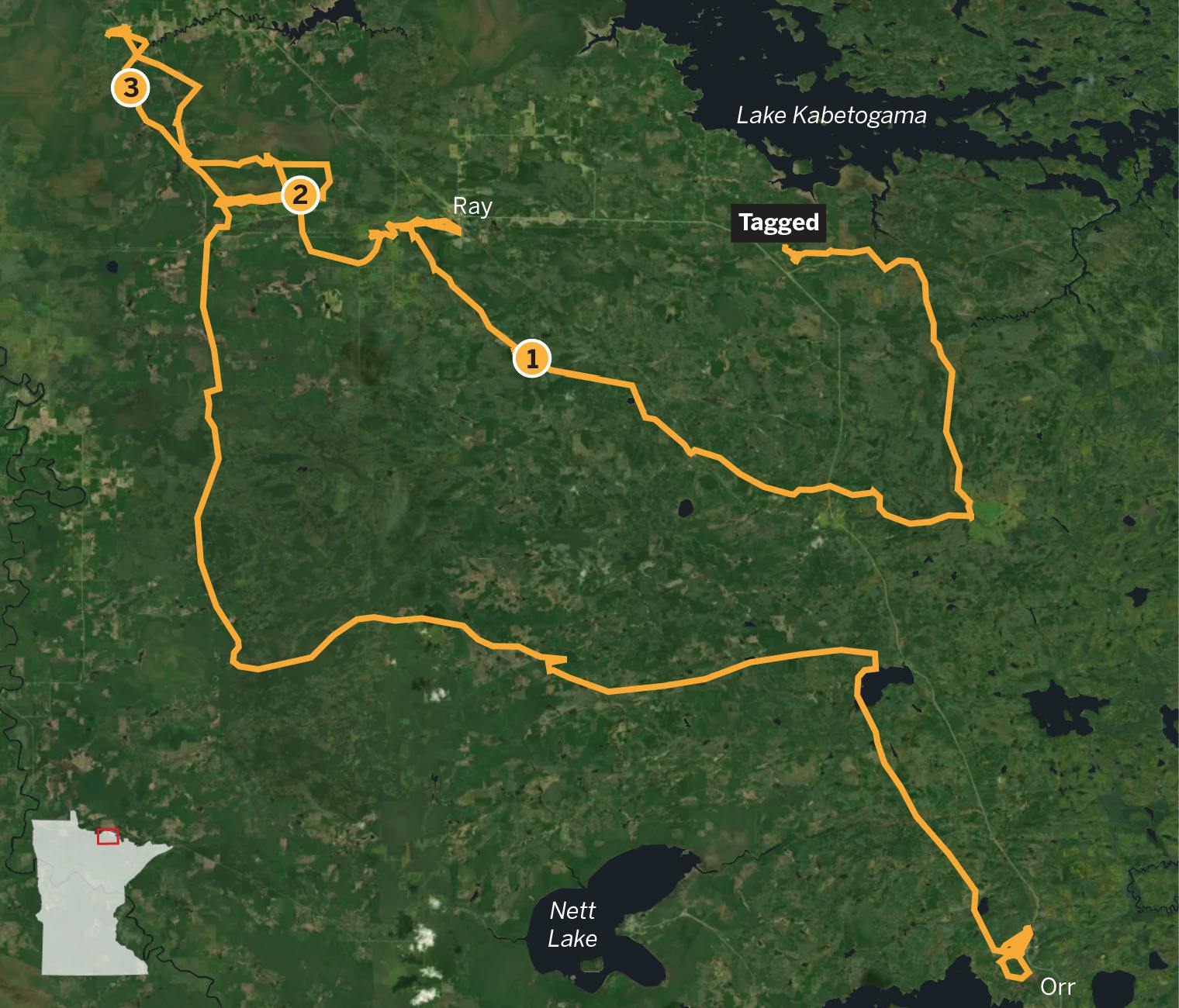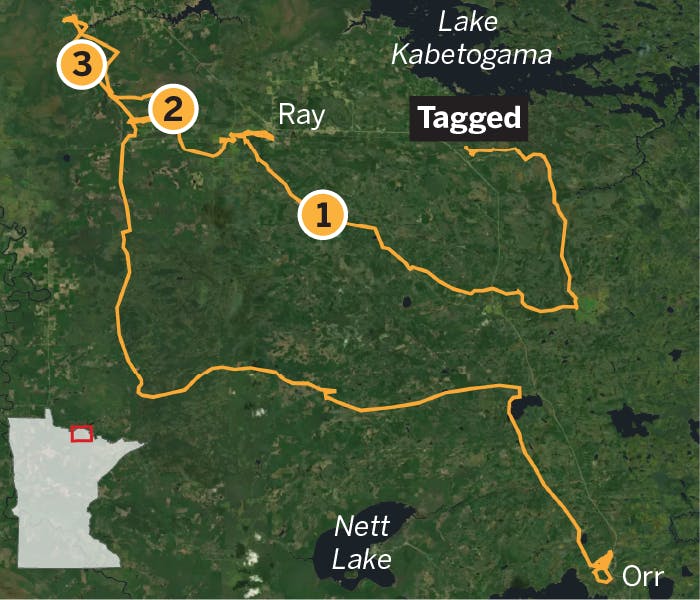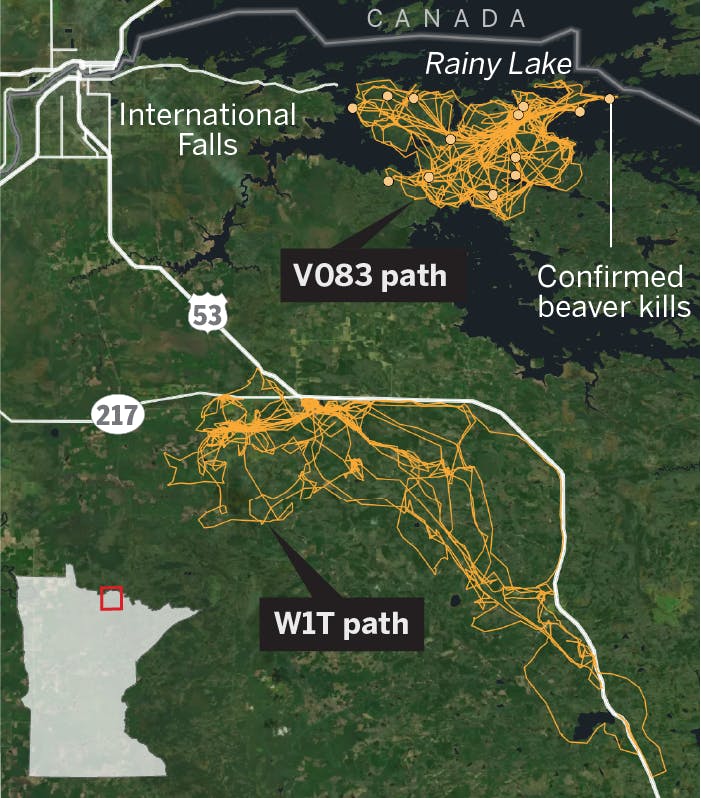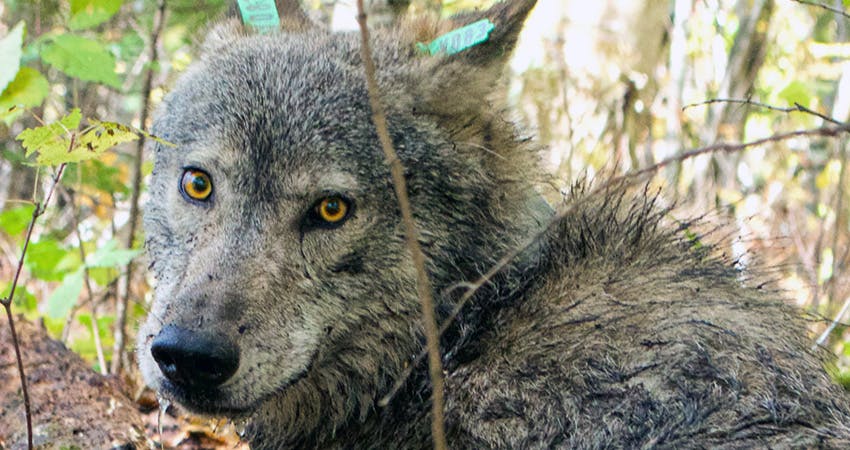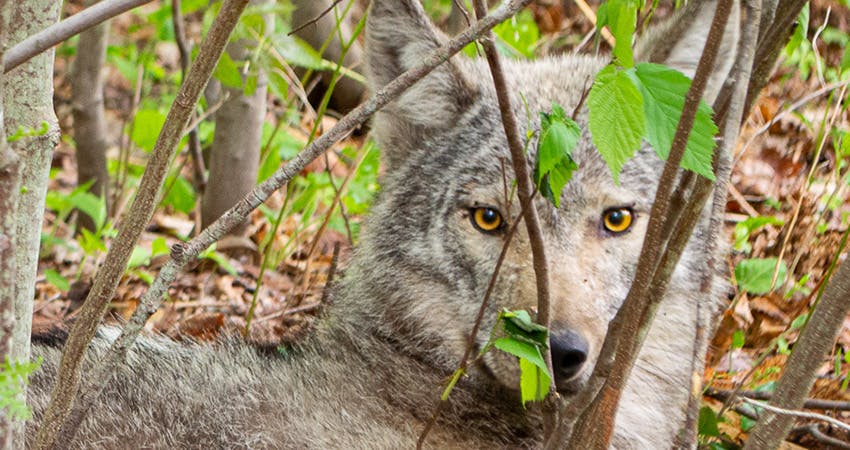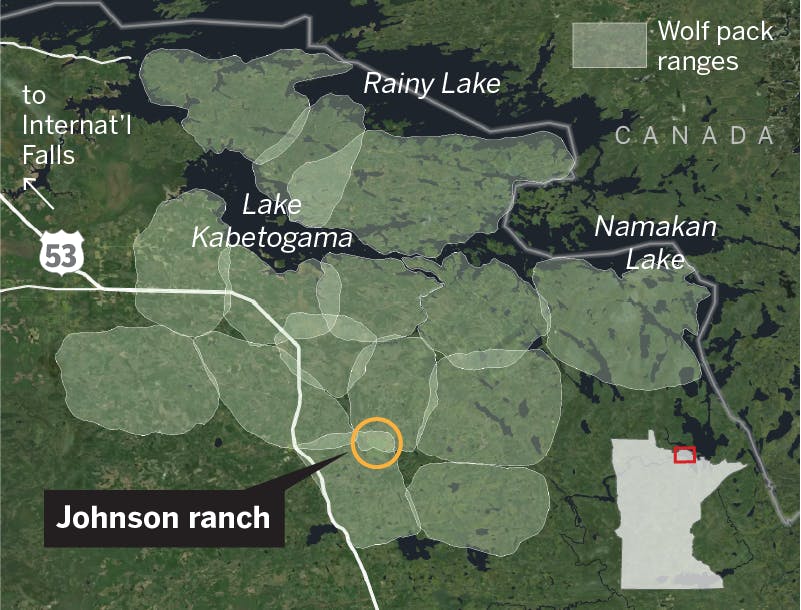KABETOGAMA, MINN.
he wolf waited silently, caught in a trap a few yards into the woods.
Biologists Thomas Gable and Austin Homkes approached slowly, carrying a sedative attached to the end of a long pole.
The wolf, thinking it was the nearby branches that trapped him, gnawed at every twig and stick he could reach. He looked thin, as all Minnesota wolves do in the late spring, and was likely young, judging from the way he kept his tail between his legs as the two researchers crept in.
He was a lone wolf, following an overgrown logging road through the outskirts of another pack's territory. That's dangerous ground — wolves will try to kill or chase off any others that step into their territory.
The wolf pivoted within what little leeway he had, trying to keep both men in front of him. Gable stayed in front; Homkes crouched behind. A quick jab with the needle and the wolf fell asleep.
"It's a good capture," Gable said. "Everything looks in good condition."
Scientists have learned more about wolves in the last 50 years than in all previously recorded history. A great deal of that — perhaps most of that — was learned in Minnesota, the only contiguous state to never exterminate them. And yet, in recent years, much of what has been known and discovered has been ignored or downplayed as two vocal and opposing camps have politicized the gray wolf like no animal before it.





